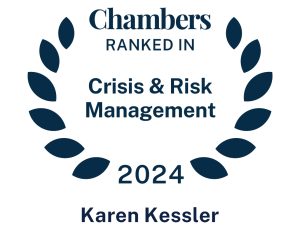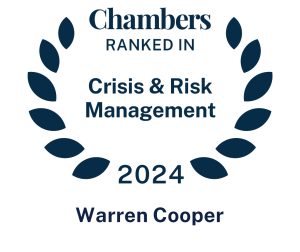This article by Warren Cooper was previously published in ROI (roi-nj.com). To view it on that site, please click here.
DEI and immigration enforcement policy decisions announced by the new administration in Washington D.C. have resulted in headline-grabbing news coverage in New Jersey and elsewhere.
Executive leaders of all types of organizations must determine what their organization’s response will be, of course, but also how to communicate that response internally, to staff, clients, and vendors, as well as externally, to outside stakeholders such as investors, the larger public and the media.
Recently announced changes in federal support for Diversity, Equity and Inclusion programs and directives for U.S. Immigration and Customs Enforcement agents require timely and strategic action on the part of business leaders. In most cases, organizations will have time to reconfigure or eliminate DEI programs, but ICE agents’ enhanced access to businesses, houses of worship, hospitals, and schools has already been implemented and could negatively impact or otherwise interrupt an organization’s operations. All organizations, particularly those with diverse workforces, clientele or other at-risk stakeholders, need to be strategic in their response to these changes if they hope to mitigate or avoid potential reputational harm.
Obviously, you’ll want to prioritize the safety and security of your staff and clients/customers and any individuals directly impacted by the administration’s actions. Beyond that, it is critical to establish clear protocols detailing how your staff should handle an encounter with ICE and providing guidance to your executive team regarding how to communicate leadership’s decisions to your staff and others. Doing so will enable you to respond quickly and effectively, and will underscore your ongoing commitment to employees, clients and other stakeholders.
Key Tips and Strategies:
1. Establish an escalation policy to alert leadership that ICE agents are onsite. Should immigration authorities arrive at your doorstep, you want to have procedures in place so everyone in your organization knows who should be alerted and how.
2. Decide how your organization will respond and communicate the plan to internal stakeholders. Establish in advance what your organizational response will be should immigration agents seek to enter your facility. Identify and assign tasks and responsibilities accordingly. Make sure everyone in the organization is aware of the plan and knows their role.
3. Establish a strategy to inform your workforce and other stakeholders if ICE agents arrive on site. Establish internal and external communication procedures to ensure timely and accurate reporting of any such incident throughout your organization and beyond.
4. Develop “holding statements” to respond in a timely manner to media and other inquiries.
Knowing in advance who might seek comment, and what your response would be, will help demonstrate to internal and external audiences your engagement – if not your command of the situation. Now is the time to establish plans to distribute information to stakeholders, the media and the public, should it soon become necessary.
Regardless of your personal politics, or the politics associated with your organization’s “brand”, an encounter with ICE agents at your facilities, campus or place of business will likely be disruptive. It could also become a local, regional or national news story. Politicians and others in your community could seek to use the encounter to further their own agendas. Communicating awkwardly or inadequately about a fraught situation after it occurs often has reputational impacts that dwarf that of the actual actions taken. Being prepared with a sound communications strategy will inspire confidence in your leadership and safeguard your organization’s reputation — and your own.
Warren Cooper provides strategic communication counsel and litigation support to clients facing personal or institutional crises at Kessler PR Group.










